The last leg of the New Zealand Expedition 2011 revealed the most stunning view throughout the journey. We started early from Omarama knowing we have a lot to clear up to Christchurch.
The first stop was Lake Tekapo, is probably one of the largest lake in the South Island. The unique feature of the lake is its torquoise blue colour water.
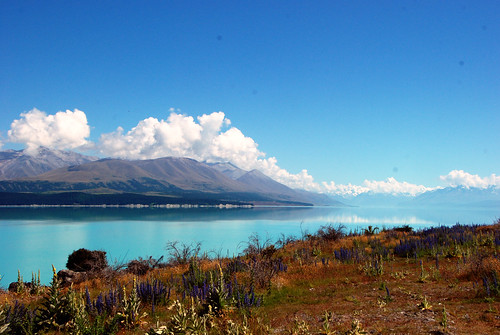
The colour is created by "rock flour": the glaciers in the headwaters grind the rock into fine dust. These suspended particles in combination with the sunlight create Lake Tekapo's unique water colour
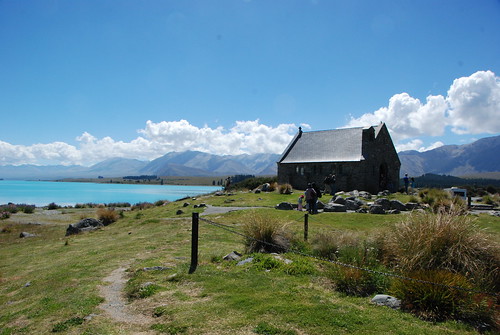
The next stop is of course the Church of Good Shepherd. Situated on the shores of Lake Tekapo is the Church of the Good Shepherd, which, in 1935, was the first church built in the Mackenzie Basin. The church at Burkes Pass, St Patrick's built in 1872 was the first church built by pioneers as a joint community effort, by Anglicans Presbyterian and Catholic settlers. Also a joint venture between Presbyterians and Anglicans, St Columba in Fairlie was built in 1879. The church at Lake Tekapo was designed by Christchurch architect R.S.D. Harman, based on sketches by a local artist, Esther Hope. The church is arguably one of the most photographed in New Zealand, and features an altar window that frames stunning views of the lake and mountains.
Onward after the visit to the Church, we went up to Mount John for a quick lunch. This is an incredible place as it allows a 360 degrees view around the Lake Tekapo region

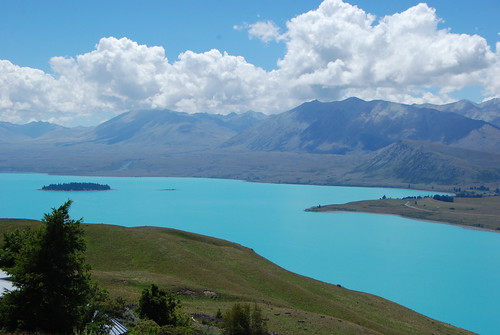
On the summit of Mount John is the University of Canterbury's astronomical observatory. During the day its domes can be seen from the Tekapo township. The mountain was chosen as the best observatory site in New Zealand because of its high number of clear nights throughout the year, the stability and transparency of the atmosphere and the uniquely dark skies in the Mackenzie Basin, devoid of city light pollution. It is internationally recognised as one of the best-situated observatories for viewing the southern night skies. For example, the Magellanic Clouds (satellite galaxies to our own Milky Way) can be seen continuously throughout the year.
In addition, it is arguably one of the most beautifully placed observatories in the world, with the magnificent surroundings of glacial lakes and moraine, and the Southern Alps
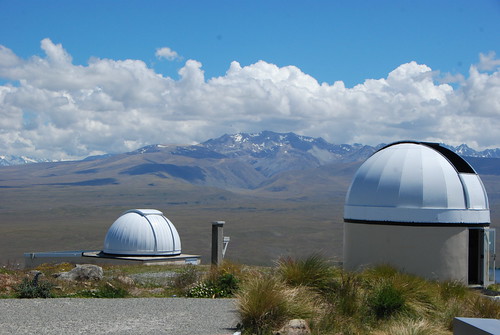
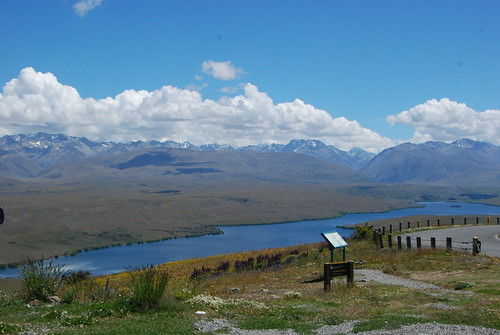
After lunch, we headed back to Christchurch to take a pit stop before we flew back to Sydney for a proper rest. Incidentally, another earthquake occurred at Christchurch 2 days after we left the city.
 The colour is created by "rock flour": the glaciers in the headwaters grind the rock into fine dust. These suspended particles in combination with the sunlight create Lake Tekapo's unique water colour
The colour is created by "rock flour": the glaciers in the headwaters grind the rock into fine dust. These suspended particles in combination with the sunlight create Lake Tekapo's unique water colour
 The next stop is of course the Church of Good Shepherd. Situated on the shores of Lake Tekapo is the Church of the Good Shepherd, which, in 1935, was the first church built in the Mackenzie Basin. The church at Burkes Pass, St Patrick's built in 1872 was the first church built by pioneers as a joint community effort, by Anglicans Presbyterian and Catholic settlers. Also a joint venture between Presbyterians and Anglicans, St Columba in Fairlie was built in 1879. The church at Lake Tekapo was designed by Christchurch architect R.S.D. Harman, based on sketches by a local artist, Esther Hope. The church is arguably one of the most photographed in New Zealand, and features an altar window that frames stunning views of the lake and mountains.
Onward after the visit to the Church, we went up to Mount John for a quick lunch. This is an incredible place as it allows a 360 degrees view around the Lake Tekapo region
The next stop is of course the Church of Good Shepherd. Situated on the shores of Lake Tekapo is the Church of the Good Shepherd, which, in 1935, was the first church built in the Mackenzie Basin. The church at Burkes Pass, St Patrick's built in 1872 was the first church built by pioneers as a joint community effort, by Anglicans Presbyterian and Catholic settlers. Also a joint venture between Presbyterians and Anglicans, St Columba in Fairlie was built in 1879. The church at Lake Tekapo was designed by Christchurch architect R.S.D. Harman, based on sketches by a local artist, Esther Hope. The church is arguably one of the most photographed in New Zealand, and features an altar window that frames stunning views of the lake and mountains.
Onward after the visit to the Church, we went up to Mount John for a quick lunch. This is an incredible place as it allows a 360 degrees view around the Lake Tekapo region

 On the summit of Mount John is the University of Canterbury's astronomical observatory. During the day its domes can be seen from the Tekapo township. The mountain was chosen as the best observatory site in New Zealand because of its high number of clear nights throughout the year, the stability and transparency of the atmosphere and the uniquely dark skies in the Mackenzie Basin, devoid of city light pollution. It is internationally recognised as one of the best-situated observatories for viewing the southern night skies. For example, the Magellanic Clouds (satellite galaxies to our own Milky Way) can be seen continuously throughout the year.
In addition, it is arguably one of the most beautifully placed observatories in the world, with the magnificent surroundings of glacial lakes and moraine, and the Southern Alps
On the summit of Mount John is the University of Canterbury's astronomical observatory. During the day its domes can be seen from the Tekapo township. The mountain was chosen as the best observatory site in New Zealand because of its high number of clear nights throughout the year, the stability and transparency of the atmosphere and the uniquely dark skies in the Mackenzie Basin, devoid of city light pollution. It is internationally recognised as one of the best-situated observatories for viewing the southern night skies. For example, the Magellanic Clouds (satellite galaxies to our own Milky Way) can be seen continuously throughout the year.
In addition, it is arguably one of the most beautifully placed observatories in the world, with the magnificent surroundings of glacial lakes and moraine, and the Southern Alps

 After lunch, we headed back to Christchurch to take a pit stop before we flew back to Sydney for a proper rest. Incidentally, another earthquake occurred at Christchurch 2 days after we left the city.
After lunch, we headed back to Christchurch to take a pit stop before we flew back to Sydney for a proper rest. Incidentally, another earthquake occurred at Christchurch 2 days after we left the city.
No comments:
Post a Comment